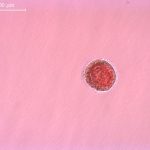Promising model to study reproductive health effects of chemicals
Exposure to EDCs is a potential threat to female reproductive health. Mixtures of chemicals can be found in serum of virtually every human being as biomonitoring studies have shown. Pregnant women are not an exception in this regard.
Levels of exposure to toxic chemicals and the resulting impacts on human health are largely determined by social as well as biological factors. Women, men, and children are exposed differently to toxic chemicals in daily life, including differences in the kinds of chemicals encountered as well as the level and frequency of such exposures. Furthermore, women and children vary in their physiological susceptibility to the effects of exposure to toxic chemicals.
EDC-MixRisk project addresses also the reproductive aspects to increase our understanding on the effects of chemical mixtures and gender on health. Dr. Pauliina Damdimopoulou’s group focuses on reproductive toxicology and the health effects of environmental endocrine active compounds. In EDC-MixRisk, the group will contribute to developing new methods and studying of health effects of chemical mixtures on women’s reproductive health.
Recently, the group has been working on the culture of a specific structure within the ovary, called a follicle. This follicle structure consists of supporting cells surrounding the growing egg. Previously, follicles have been successfully cultured using mouse tissue but challenges have remained in terms of human ovarian tissue.
The new model developed by Dr. Damdimopoulou’s group looks promising in applying the method to human tissue. Follicles in early stages of development are isolated from human ovaries that are obtained from Karolinska University Hospital Huddinge, and placed into a matrix to maintain their 3D structure. First, a cellulose matrix was tested but better success was achieved by using alginate which is a natural product of algae. The group is now working on improving the growth conditions to support follicle and egg development over a longer period of time.
A healthy human secondary follicle freshly isolated and ready for culture (Picture by Astrud Tuck)
The strength of this in vitro model is its direct relevance to humans. It also contributes to the replacement of animal-based methods and testing. Eventually, the research carried out by the group will increase our knowledge on how chemicals and chemical mixtures can affect women’s fertility. Furthermore, it is important to recognize the significant linkages between gender and chemicals.
For more information on the research team:
http://swetox.se/en/research/pauliina-damdimopoulou/


0 comments